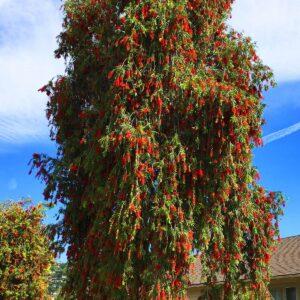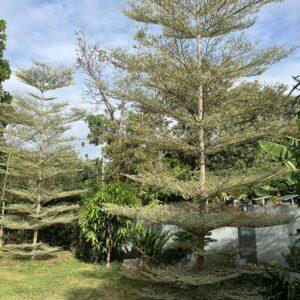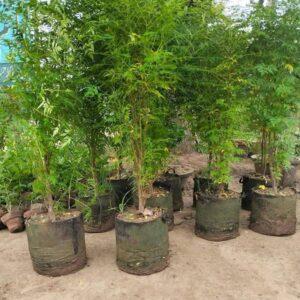White Sandal Treescientifically known as *Santalum album*, is a small, slow-growing evergreen tree prized for its aromatic heartwood and essential oil. Commonly referred to as **Indian sandalwood** or **Chandan**, it is native to southern India and parts of Southeast Asia.
**Description**
– Height: Typically grows between 4 to 9 meters
– Leaves: Opposite, ovate to lance-shaped, smooth and glossy green on top with a pale underside
– Flowers: Small, initially greenish-white, turning reddish-purple as they mature
– Bark: Smooth and grayish-brown in young trees, becoming rough and cracked with age
– Heartwood: Pale green to creamy white, highly fragrant and the most valuable part of the tree
**Growing Conditions**
– Sunlight: Prefers full sun to partial shade
– Soil: Well-drained, sandy or loamy soil with good organic content
– Watering: Moderate; young trees need regular watering, but mature trees are drought-tolerant
– Climate: Thrives in tropical and subtropical climates with moderate rainfall
**Unique Characteristics**
– Hemiparasitic: The tree forms root connections (haustoria) with nearby host plants to draw nutrients, especially during early growth
– Growth Rate: Slow-growing; takes 15 to 20 years to mature for harvesting
– Longevity: Can live for several decades under favorable conditions
**Uses**
– Wood: Used in carving, furniture, and religious artifacts due to its fragrance and durability
– Oil: Extracted from the heartwood; used in perfumes, incense, cosmetics, and traditional medicine
– Cultural: Considered sacred in Hinduism and Buddhism; used in rituals, meditation, and Ayurvedic treatments
Due to overharvesting and high demand, *Santalum album* is now considered a vulnerable species in the wild. Cultivation efforts are increasing to ensure sustainable production of this highly valued tree.”





Reviews
There are no reviews yet.